Gelato!
How to identify true artisan gelato from the artificial stuff + five gelaterias to try in Rome & our favorite gelato flavor and where to find it.
Spring is here, and even though there really is no seasonality for gelato - we enjoyed it in February when we were in Rome recently - the weather is perfect for taking a stroll and stopping for a gelato.
Gelato comes from the Italian verb gelare, which means to freeze. Gelo means frost, and the adjective gelato means frozen. Gelato, of course, also means ice cream, that uniquely Italian version of everyone’s favorite frozen dessert.
Gelato vs. Ice Cream
While gelato may translate to ice cream, there are key differences between the two. Gelato has a lower fat content than ice cream, as it is made with a higher ratio of milk to cream. Gelato is churned more slowly than ice cream, introducing less air into the final product and producing a richer, creamier product with a more intense flavor profile. Gelato is also served at a warmer temperature than ice cream, which is why it is scooped with a spatula.
Gelato artigianale
If you’ve visited any Italian city, you’ve probably seen signs for gelato artigianale, artisan gelato. What exactly does that mean? Gelato artigianale is understood to mean gelato that is crafted completely from scratch by skilled makers, often using organic, local, and seasonal ingredients.
The explosion in popularity of gelato has led to the commercialization of the gelato-making process, and more and more gelaterias are using powder mixes, pre-made bases, artificial flavorings, and colorants. As a result, it’s becoming harder to find authentic gelato artigianale. Fortunately, the tell-tale signs of inferior gelato are easy to spot.
What to avoid
Gelaterias with tons and tons of gusti (flavors). Gelato artigianale does not have a long shelf life. Artisan gelaterias make fresh gelato daily based on how much they expect to sell. When you come upon a gelateria with rows and rows of flavors, unless it is a very busy place, you can be pretty sure they are not making it from scratch every day.
Gelato piled in high peaks and swirls above the bins it is stored in. Gelato artigianale has less structure and would not hold that form. If the gelato is more than an inch or two above its container, keep walking. As one of our favorite food writers, the Paris-based pastry chef David Lebovitz, recently wrote, “If it’s that high, it’s likely got something in it to stabilize it.”
Brightly-colored gelato. Gelato made with real ingredients has subdued colors. Pistacchio, for example, should be the palest shade of green or even a soft beige. Strawberry will be a faded pink. If you spot gelato with vibrant hues, they are using artificial coloring and probably other unnecessary ingredients, too.
What to look for
Artisan gelaterias will almost always have a gelateria artigianale sign, but since there is no regulation around use of the term “artigianale,” so will a few other gelaterias whose gelato is not truly made from scratch. Here are a few things to look for in a true gelateria artigianale:
Often, artisan gelaterias are smaller shops since the gelato is made fresh each day, and the gelateria only makes as much gelato as it expects to sell.
The gelato fits inside the bins and is not glammed up with sauces, candy, and other toppings.
There are usually fewer flavors of gelato with an emhasis on the classics like cioccolato (chocolate), nocciola (hazelnut), pistacchio (pistachio), fragola (fragola), fior di latte (pure milk) and the occasional flavor combination such as ricotta e fichi (ricotta and fig) or tiramisù. You won’t find many elaborate flavor concoctions, candy-flavored gelato, or toppings mixed in.
How to order gelato
First, decide if you want your gelato in a coppa (cup - sometimes also called coppetta) or cono (cone).
Then, decide your size, which will typically be piccolo (small), medio (medium) or grande (large). Or, the size may just be based on how many flavors - gusti - you want - un gusto, due gusti, tre gusti, etcetera.
Next, decide on your gusti. Gelato comes in fruit flavors, chocolate-based flavors, nut-based flavors, and cream-based flavors. Usually, you are allowed to choose two flavors with a small cup or cone, three flavors with a medium, and probably four flavors with a large, but I don’t think we’ve ever ordered four flavors - that’s a LOT of gelato!
Sometimes they will ask you if you would like some panna (fresh whipped cream) on your gelato - or at least in Rome they will. The correct answer, in our opinion, is sì, grazie.
Note: When you order gelato at the counter, you take the gelato to go. Some gelaterias offer table seating. In those instances, like at a coffee bar, you should ask to be seated. A waiter will take your order from a menu with expanded offerings and serve you the gelato, usually in a glass dish. It costs more, but it’s a lovely experience.
Five Gelaterias to Try in Rome
Giolitti
Via Uffici del Vicario, 40
Giolitti is one of our tried and true gelaterias and an institution in Rome. Located between the Pantheon and Palazzo Montecitorio and serving pastries and caffè in addition to gelato, it’s popular amount tourists and Romans alike.
giolitti.it
@giolittiofficial
Gelateria dei Gracchi
Via Ripetta, 261, and two other locations in Rome.
Gelateria dei Gracchi makes its gelato daily using select Italian milk, high-quality ingredients, and seasonal fruit. They also produce gluten-free and lactose-free gelato and use only biodegradable cups and spoons. The original location is on Via dei Gracchi in the Prati neighborhood, but the location on Via Ripetta, just off of Piazza del Popolo, is the most convenient when you are visiting Rome’s historical center.
gelateriadeigracchi.it
@gelateriadeigracchi
Günther Gelato Italiano
Piazza di Sant’Eustachio, 47, and two other locations in Rome’s historical center.
Despite its Germanic-sounding name, Günther Gelato Italiano is, in fact, an Italian gelateria. It was founded by Günther Rohregger, a former ski instructor from South Tyrol in Alto Adige, amidst the Dolomite mountains in far northeastern Italy, just south of Austria. Located across the piazza from the famous Caffè Sant’Eustachio, Günther is an unassuming gelateria serving up excellent gelato.
gunthergelateriaitaliano.com
@gunthergelateriaitaliano
Gelateria Fassi
Via Principe Eugenio, 65-67
Founded in 1880 by Giacomo Fassi and still family-owned five generations later, Fassi is Rome’s oldest and most iconic gelateria. Fassi even offers behind-the-scenes tours of the gelato production process that end with a tasting of gelato and their trademark Sanpietrini, mini gelato cubes fashioned after the black basalt cobblestones that Rome’s streets are made of.
gelateriafassi.com
@fassi_1880
Gelateria del Teatro
Via dei Coronari, 65
Gelateria del Teatro is located along the charming Via dei Coronari, which connects Piazza Navona to the Tiber River at Ponte Sant'Angelo, at the corner of Via S. Simone, a tiny lane that ends in a staircase leading to the church Santa Simone. When our boys were little, we’d stop for gelato and sit on the steps of that staircase while we ate it. Gelato is made on-site daily in small batches from high-quality, fresh ingredients sourced from local producers.
Gelateria del Teatro is our favorite gelateria in Rome, and it serves our favorite gusto (flavor): Vecchia Roma, (Old Rome), made with ricotta, wild cherry, and shortbread crumble, a tribute to the quintessential Jewish Roman dessert crostata di ricotta e visciole.
gelateriadelteatro.com
@gelateriadelteatro
The Montalcino House
Stay tuned for next week’s newsletter, where we will tell you about our time spent in Montalcino after we closed on the house, the meeting we had with our project manager to begin renovation planning, and a few surprises we discovered!


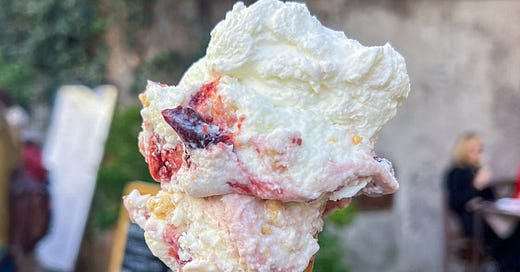





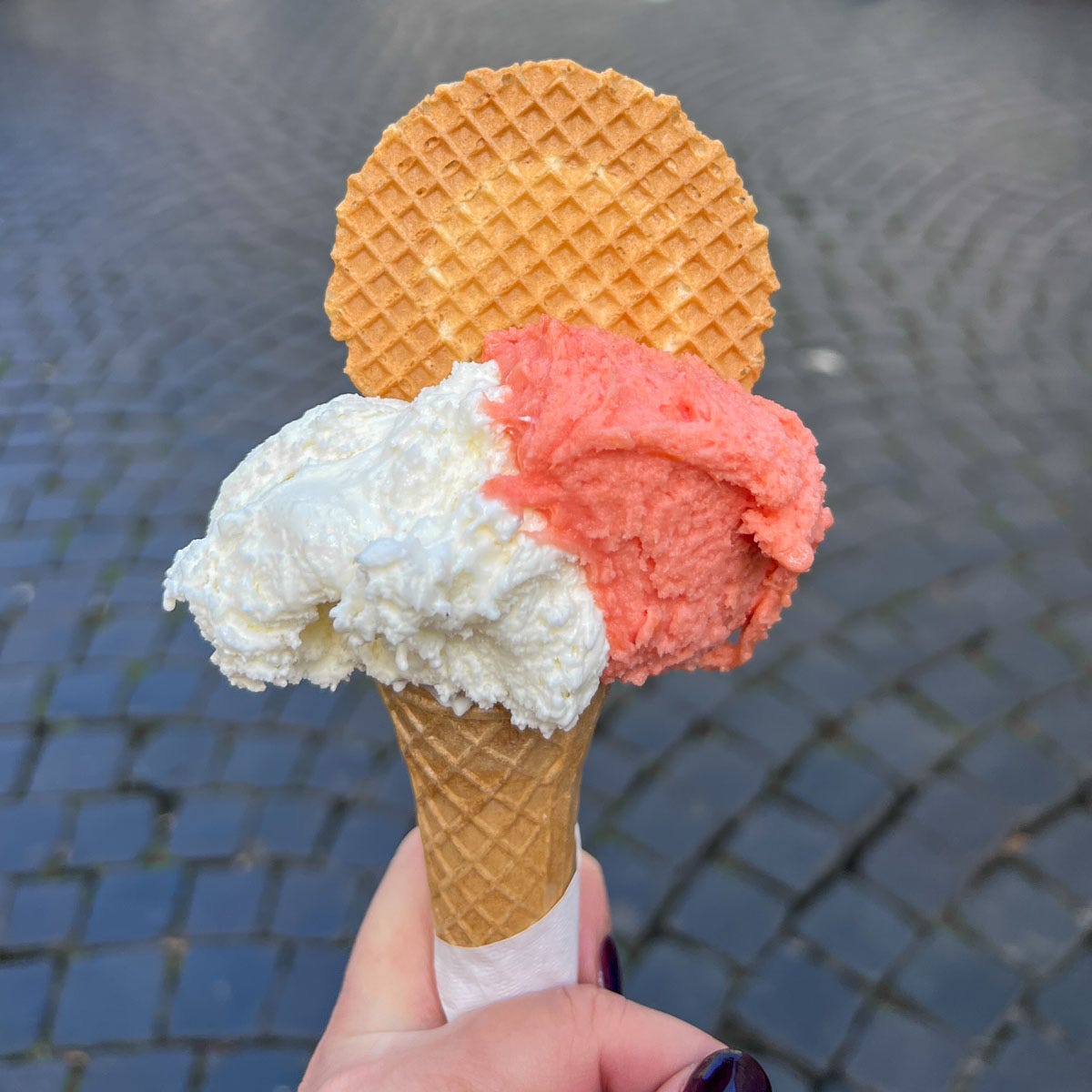
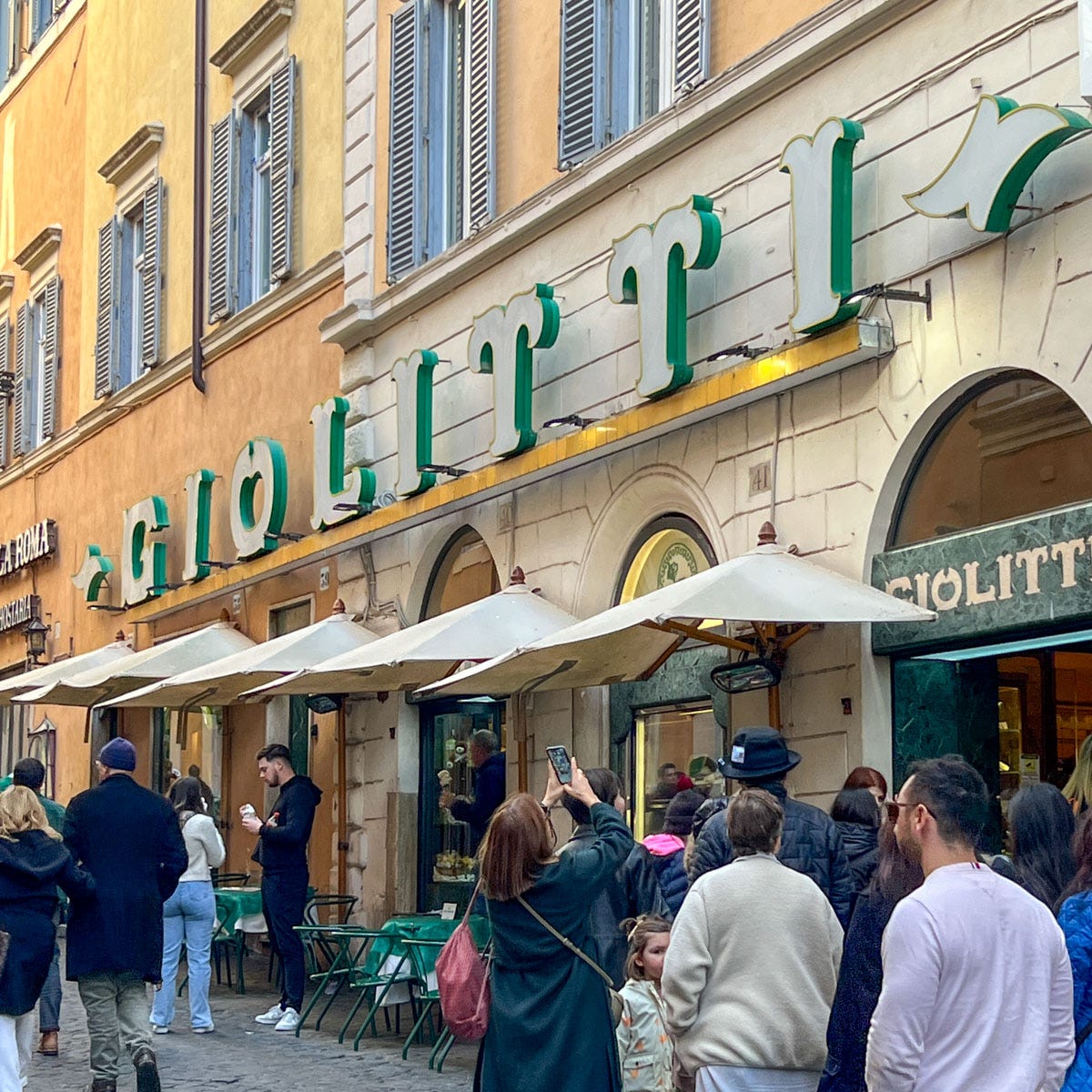
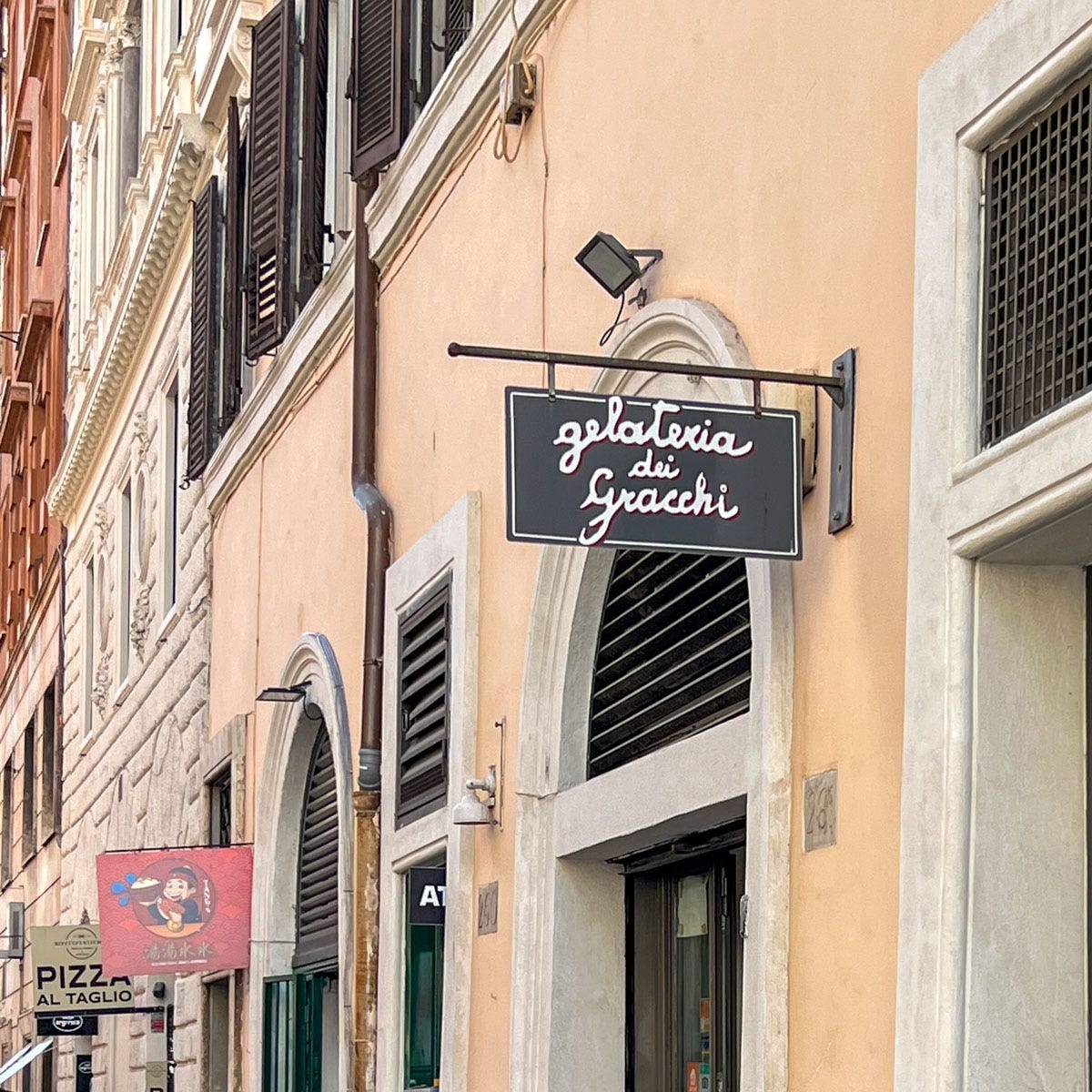
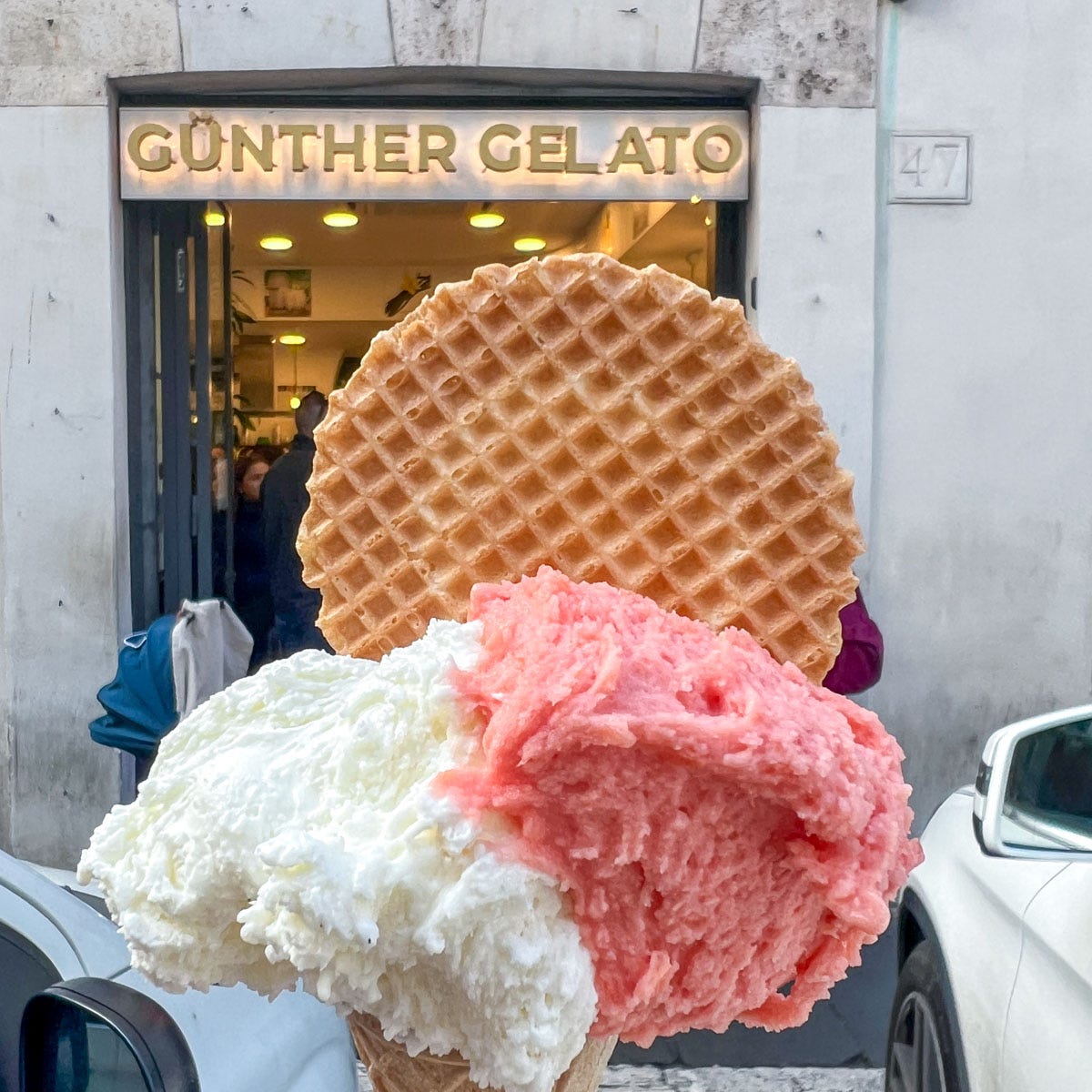
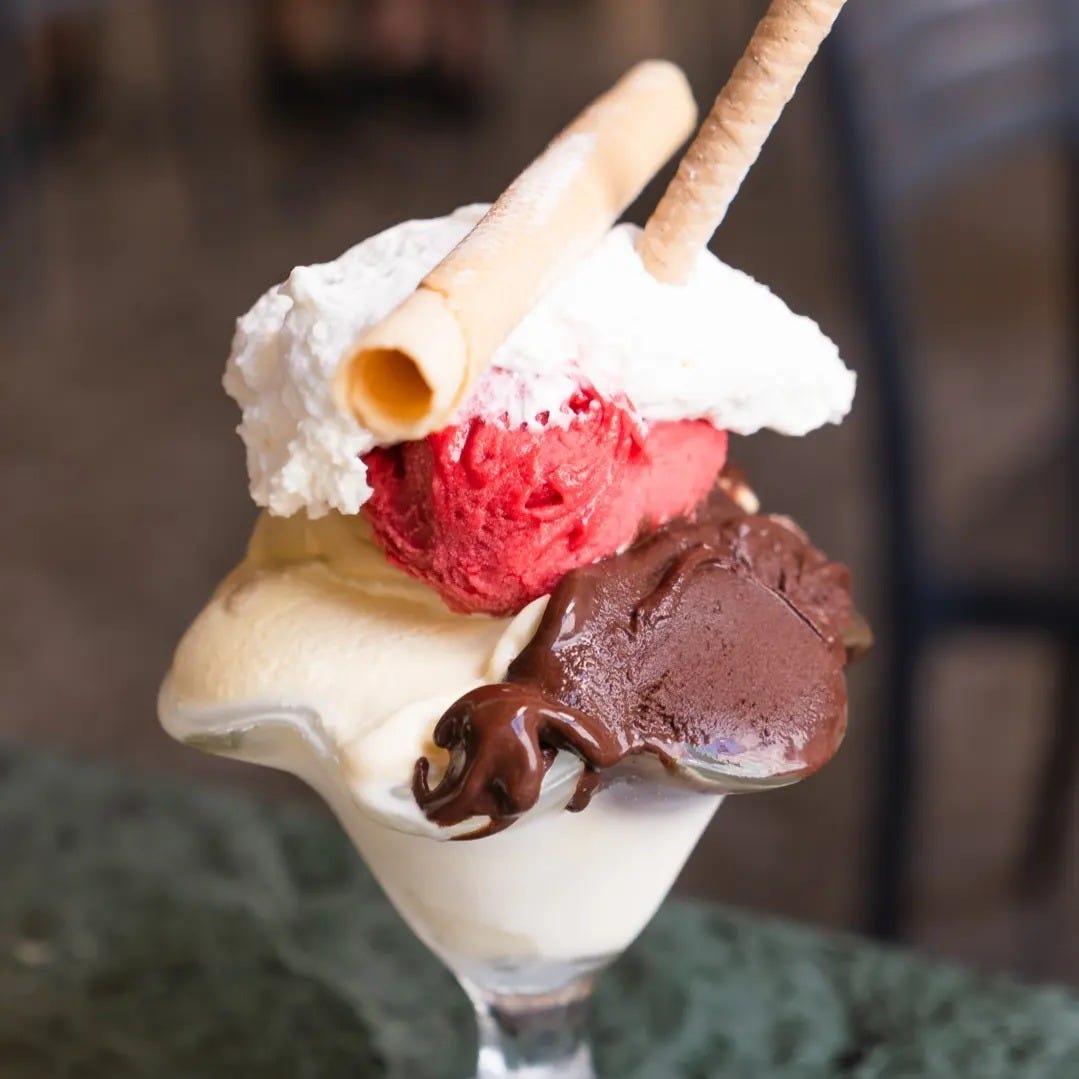
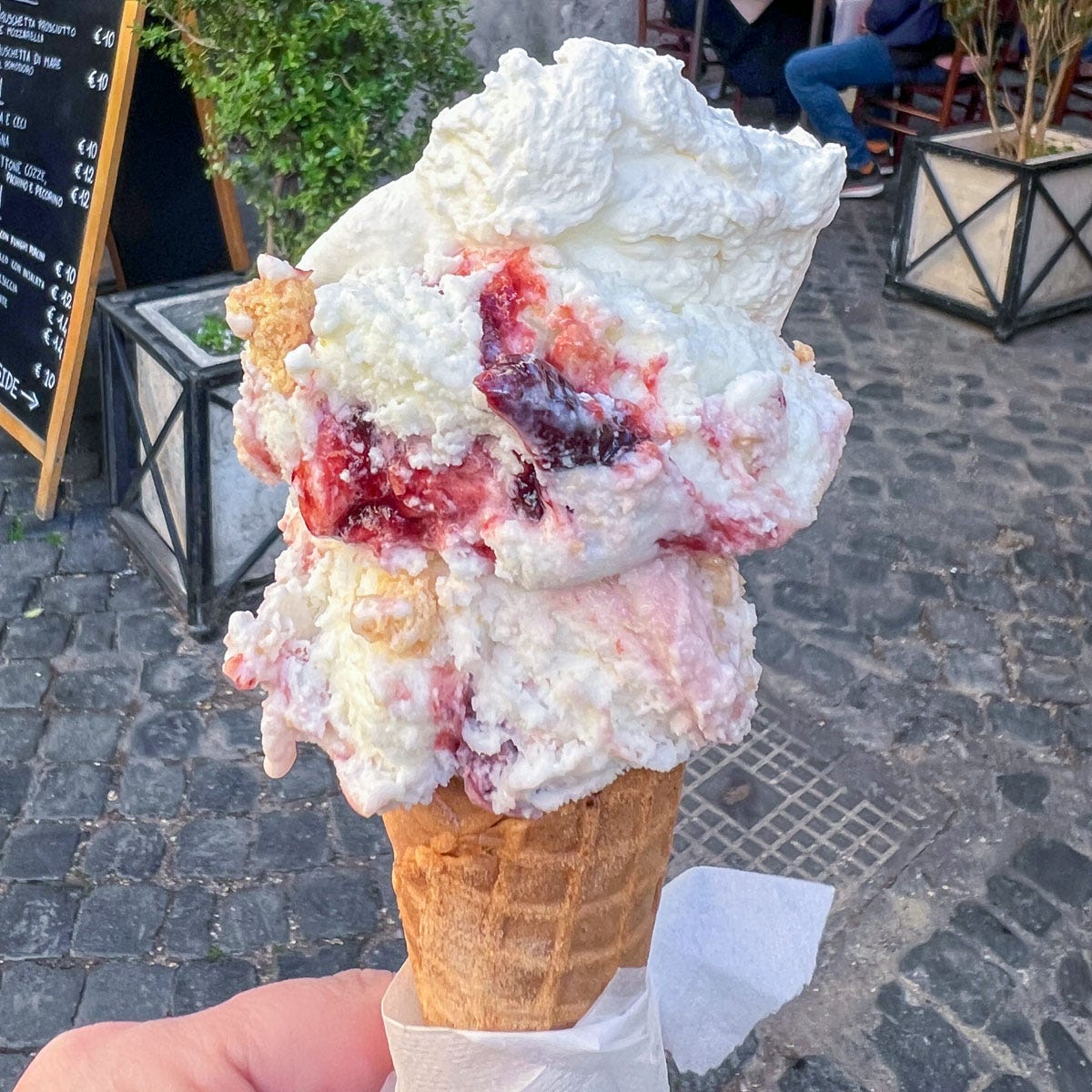
Even with no Roman gelateria tour in my foreseeable future, this was an entertaining read. No sculpted peaks -- who knew? Your favorite flavor sounds amazing!